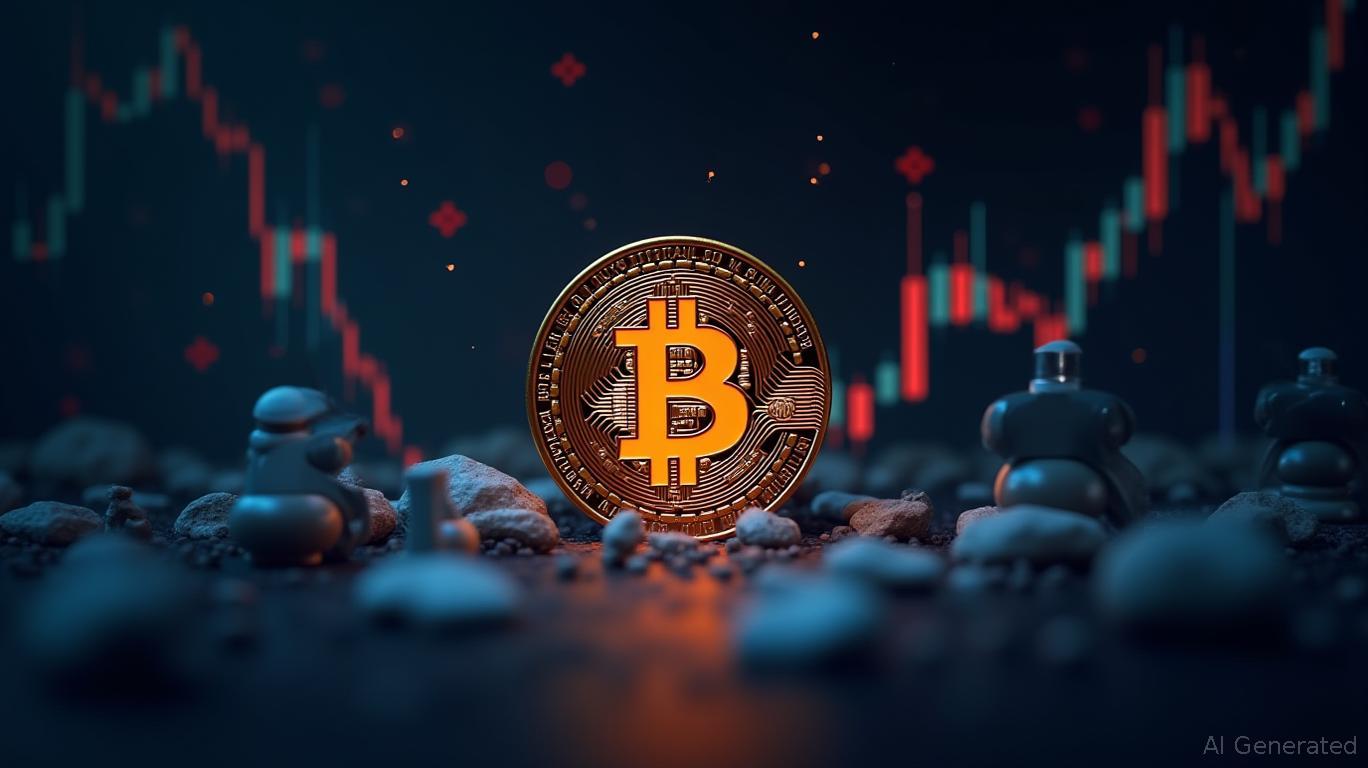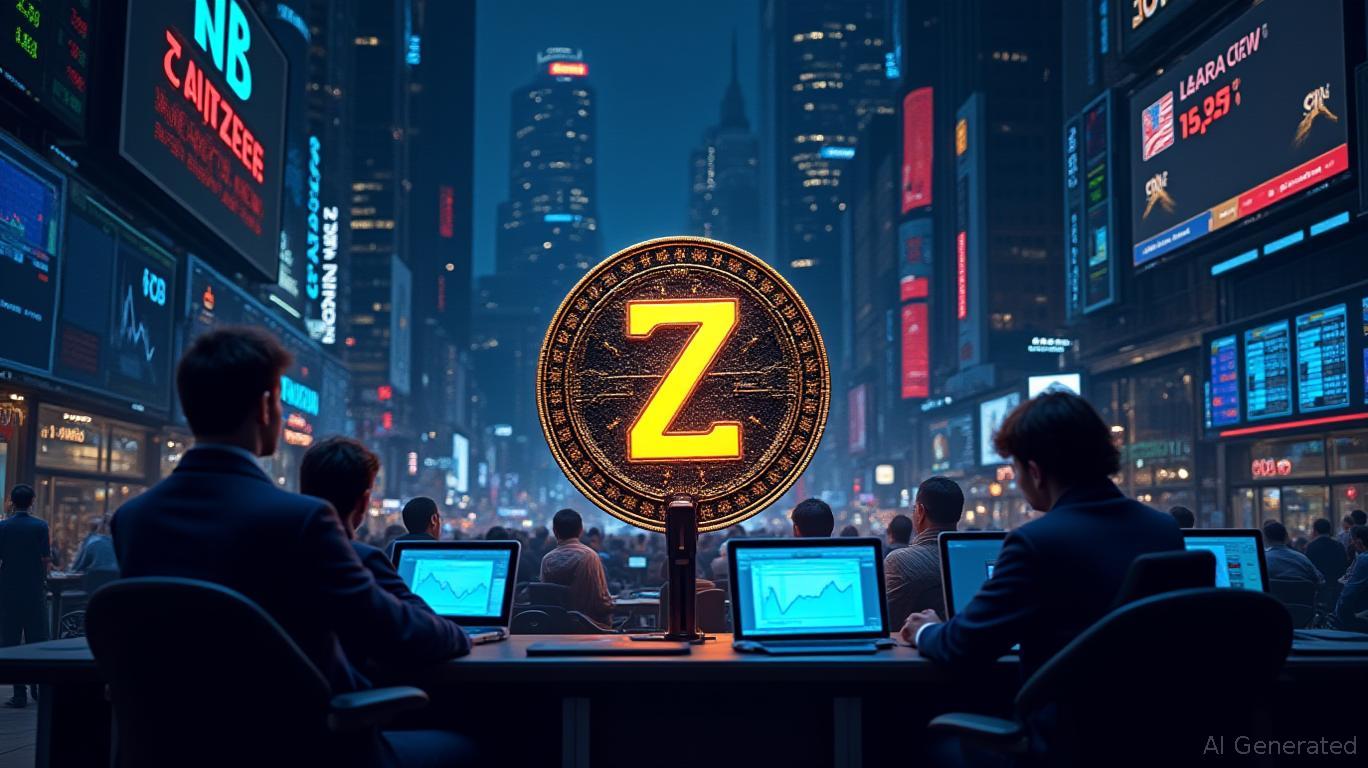EU’s Complex Regulations Hinder Stablecoin Progress While U.S. Companies Advance
- EU stablecoin firms face dual licensing under MiCA and PSD2, doubling €250,000 capital requirements and stifling innovation. - USDC (Circle) and Tether dominate with $74B and $135B in Treasury holdings, leveraging compliance and institutional partnerships. - Circle's Arc blockchain and Tether's infrastructure strategies highlight industry shift toward proprietary solutions for compliance and speed. - Geopolitical competition intensifies as South Korea launches KRW1 stablecoin on Circle's Arc, targeting i
The competition among stablecoins in 2025 is increasingly focused on meeting regulatory standards, as top companies maneuver through a maze of international regulations. In the European Union, inconsistent policies risk hindering progress, while American issuers such as

Stablecoin providers in the EU are facing significant challenges as overlapping obligations from the Markets in Crypto-Assets (MiCA) regulation and the Payment Services Directive (PSD2) require companies to obtain two separate licenses for identical custody and transfer services. The European Banking Authority (EBA) clarified in June 2025 that euro-backed stablecoin custody falls under PSD2, obligating firms to acquire both MiCA and PSD2 licenses by March 2026. This overlap effectively doubles the capital requirement—€125,000 for each license—resulting in a €250,000 minimum, as highlighted in a
While European authorities continue to debate compliance issues, U.S. stablecoins are gaining momentum.
At the same time, Tether has carved out a significant role in traditional finance. Its holdings in U.S. Treasuries now top $135 billion, placing it above South Korea and the UAE and ranking 17th worldwide, according to
Geopolitical rivalry is also heating up. South Korea’s BDACS has introduced its won-pegged stablecoin, KRW1, on Circle’s Arc blockchain, joining a group of institutional partners like BlackRock and Visa, as detailed by
Launched in August 2025, Circle’s Arc blockchain marks a strategic move for stablecoin issuers aiming to control their own settlement networks. By developing a dedicated Layer-1 blockchain, Circle seeks to enhance transaction efficiency, lower expenses, and integrate compliance mechanisms directly into the system, as reported by
As the stablecoin sector continues to change, the combination of regulatory certainty and technological advancements will shape which companies lead the market in 2025.
Disclaimer: The content of this article solely reflects the author's opinion and does not represent the platform in any capacity. This article is not intended to serve as a reference for making investment decisions.
You may also like
Bitcoin Updates Today: October Slump in Bitcoin Paves the Way for a November Recovery Amid Institutional Moves and Global Political Shifts
- Bitcoin's November historically averages 42.51% gains, with experts predicting a 2025 rebound after October's 3.69% drop. - Market shifts to spot trading and declining exchange balances signal accumulation, while Saylor and Kiyosaki forecast 2025 price doubling. - ETF outflows and macro risks persist, but reduced leverage and geopolitical easing (e.g., Trump-Xi meeting) support November optimism.

Zcash Strikes a Balance Between Privacy and Regulatory Standards, Surpassing Competitors and Reaching a $7 Billion Market Value
- Electric Coin Co. (ECC) released Zcash's Q4 2025 roadmap, prioritizing privacy upgrades and technical debt reduction amid ZEC's $7B market cap surge surpassing Monero and Shiba Inu. - Roadmap includes ephemeral transparent addresses, address rotation, and P2SH multisig support in hardware wallets to enhance privacy and scalability while securing the Dev Fund. - ZEC's 50% weekly price jump to $350 and 800% monthly gain reflect growing institutional adoption, Grayscale's $137M Zcash Trust, and 4.5M shielde

Solana News Update: Institutional Investments Move Toward Solana ETFs, Boosting Altcoin Uptake
- Grayscale and Bitwise's Solana ETFs attracted $199M in four days, signaling institutional confidence in the blockchain's ecosystem. - Bitwise's BSOL dominated with $197M inflows, outpacing Grayscale's GSOL due to lower fees and higher staking ratios. - Solana's price stabilized at $190 amid ETF-driven liquidity growth, with analysts forecasting potential $300-$500 targets. - Institutional capital shifted to Solana ETFs, causing outflows from Bitcoin and Ethereum ETFs as investors prioritize yield and ado

Ethereum Updates Today: How Ethereum and MoonBull Take the Lead as Crypto Market Focuses on Practical Use and Returns
- Ethereum strengthens dominance via institutional adoption and zero mainnet outages, outpacing Bitcoin in Q3 ETF inflows. - Chainlink (LINK) reclaims DeFi infrastructure relevance with $11.84B market cap and 86% bullish sentiment. - MoonBull ($MOBU) surges as 23-stage presale offers 95% APY staking, attracting 1,600 holders with Ethereum-based tokenomics. - Crypto market shifts toward utility and yield, with tokenization projected to reach $2 trillion by 2028 amid U.S. regulatory clarity.
